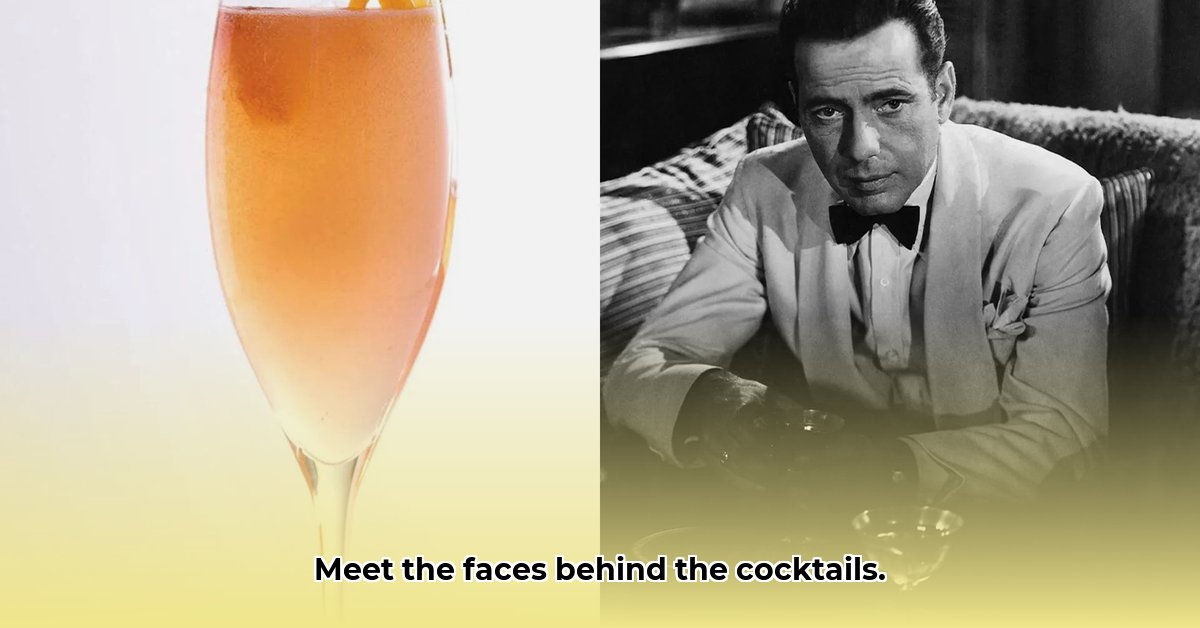
Cocktail Film Cast: More Than Just Tom Cruise's Charm
Everybody remembers Cocktail (1988), largely due to Tom Cruise's charisma. However, a film's success isn't solely dependent on its leading man; it's a collaborative effort. Let's explore the Cocktail cast and crew, going beyond the familiar faces.
The Leading Roles: More Than Just Pretty Faces
Tom Cruise, as Brian Flanagan, the ambitious bartender, is undeniably central. Elisabeth Shue, playing Jordan Mooney, provided the film's spark and engaging energy. Their on-screen chemistry remains a topic of discussion. Supporting roles, expertly played by Bryan Brown, Lisa Banes, and Isabella Rossellini, added depth and richness to the narrative. The film's success wasn't only about star power; it was about the skill and talent of each individual actor.
Beyond the Stars: The Unsung Heroes of Cocktail
The film's production was a huge undertaking, involving filming in both New York City and Jamaica. Coordinating hundreds of individuals across these vastly different locations demanded exceptional logistical prowess. Tom Cruise's star power was undeniably a factor, but the true success of Cocktail lay in the seamless teamwork of the entire production crew.
The Crew: A Glimpse Behind the Scenes
The success of any film hinges on the dedication and skills of its crew. Cocktail's production was no exception. Here's a closer look at key departments and personnel:
| Department | Key Personnel | Responsibilities |
|---|---|---|
| Directing | Roger Donaldson | Overall vision, production management. |
| Cinematography | Miroslav Ondříček | Visual aesthetic of the film, including capturing beautiful shots. |
| Production Design | Norman Reynolds | Set design and location management. |
| Costume Design | Jennifer von Mayrhauser | Character development through clothing choices. |
| Editing | Tom Rolf | Assembly and structuring of filmed footage into the final narrative. |
| Sound Design/Mixing | (Team) | Creation of the film’s soundscape, encompassing dialogue and background audio. |
| Location Management | (Teams in NYC & Jamaica) | Logistical management, including permits, equipment transport, etc. across both locations |
This is just a fraction of the extensive crew involved; grips, gaffers, set decorators, and many more contributed to the film’s success. It truly showcased the power of collaborative filmmaking.
Filming in Two Locations: The NYC and Jamaica Challenge
Filming a movie across multiple locations, especially as geographically diverse as New York City and Jamaica, presents immense logistical hurdles. This included coordinating travel, equipment transport, and scheduling across two vastly different environments. Securing permits and addressing unexpected challenges would have added further complexities. The film’s production demonstrated remarkable organizational capability and on-site adaptability.
Cocktail's Legacy: The Power of Collaboration
In conclusion, Cocktail's success wasn't merely a product of Tom Cruise's stardom. It was a testament to the combined efforts of actors, crew, and the overall production team. The film serves as an excellent example of the scale and complexity of filmmaking, with numerous individuals contributing to the final result. The film highlights the importance of collaboration and dedication in achieving a shared creative vision. Sometimes, the unsung heroes are just as crucial as the stars themselves.
How Did Cocktail (1988) Navigate Multi-Location Filming Challenges?
Key Takeaways:
- The film's commercial success, despite mixed critical reception, showcases the power of escapism and star power (Tom Cruise).
- Multi-location filming presented significant production challenges.
- Efficient logistical planning was crucial given budget and scheduling constraints.
- The production team likely included highly experienced location managers and logistics personnel.
- Pre-production planning and on-set adaptability were essential.
Filming across multiple locations presents substantial hurdles. Cocktail's success, despite less-than-stellar reviews, underscores the effectiveness of its production strategies.
Navigating the Multi-Location Maze
The film's production, encompassing locations such as New York City and the Bahamas, required extensive logistical planning. This involved transporting crew and equipment, securing permits, arranging accommodation, and meticulously synchronizing schedules. The unpredictable nature of filming in diverse locations added further complexities, demanding exceptional flexibility and problem-solving.
The Unsung Production Heroes
The success depended heavily on the production team's proficiency. Experienced location scouts, location managers, and transport coordinators played pivotal roles. Their efforts ensured smooth operations despite the inherent complexities. The coordination of diverse tasks, from managing legal requirements to facilitating travel and equipment transport, was crucial for the film’s timely and successful completion.
While the specific methods employed by Cocktail's production remain unknown, effective logistical management and robust risk mitigation strategies were essential in ensuring a smooth production process. Overcoming unforeseeable challenges was undoubtedly a key factor in delivering a completed film on time and within budget.